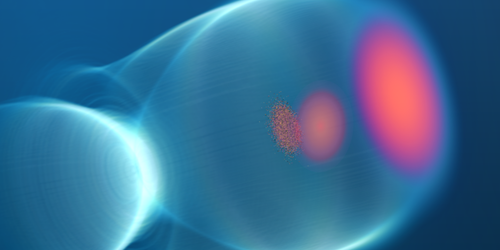Energy Evolution of Electrons Measured Noninvasively
Accelerating particles to relativistic speeds typically requires particle accelerators that are many kilometers in length. Miniature particle accelerators a few tens of centimeters long or smaller also exist. These so-called laser-plasma accelerators are being tested in research facilities for future use in hospitals, where scientists hope the accelerators could generate x rays for cancer diagnostics and treatment. In these devices, particles are accelerated by short laser pulses, so scientists have only a few femtoseconds to track the particles’ evolving properties. Now Simon Bohlen of the German Electron Synchrotron (DESY) and colleagues experimentally demonstrate a technique to measure the energy evolution of an electron bunch inside a laser-plasma accelerator [1]. The team hopes that the technique could be used to improve laser-plasma accelerators and ready them to generate x rays for medical applications.
For their demonstration Bohlen and colleagues used a phenomenon called Thomson scattering, which is the scattering of photons by electrons. They split in two the laser beam used to accelerate the electrons, using one part for normal electron acceleration and the other part to create a Thomson laser—a beam of photons the accelerated electrons could scatter. They then overlapped the Thomson laser and the accelerated electrons such that the two interacted at 20 locations over a 400-𝜇m distance. The team measured the energy of the photons scattered during these interactions using an x-ray detector. From these measurements, the team reconstructed the energy evolution of the electrons over most of the accelerator length without destroying the electron beam.
–Allison Gasparini
Allison Gasparini is a freelance science writer based in Santa Cruz, CA.
References
- S. Bohlen et al., “In situ measurement of electron energy evolution in a laser-plasma accelerator,” Phys. Rev. Lett. 129, 244801 (2022).




